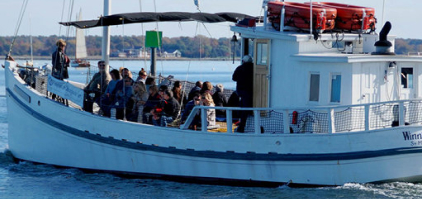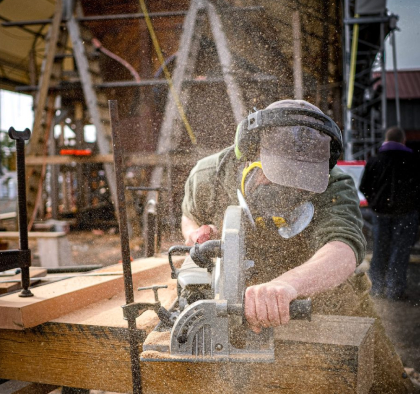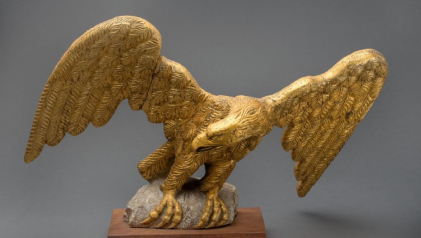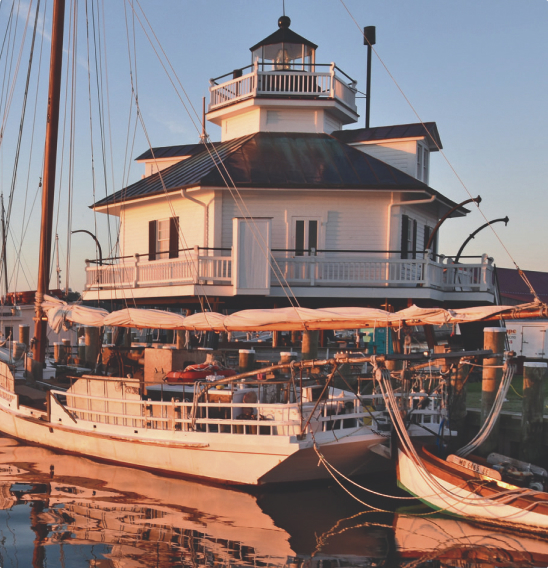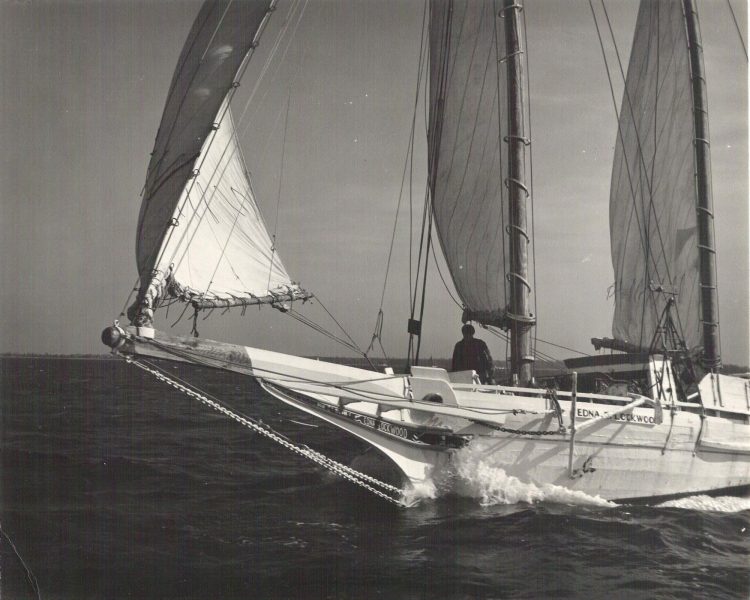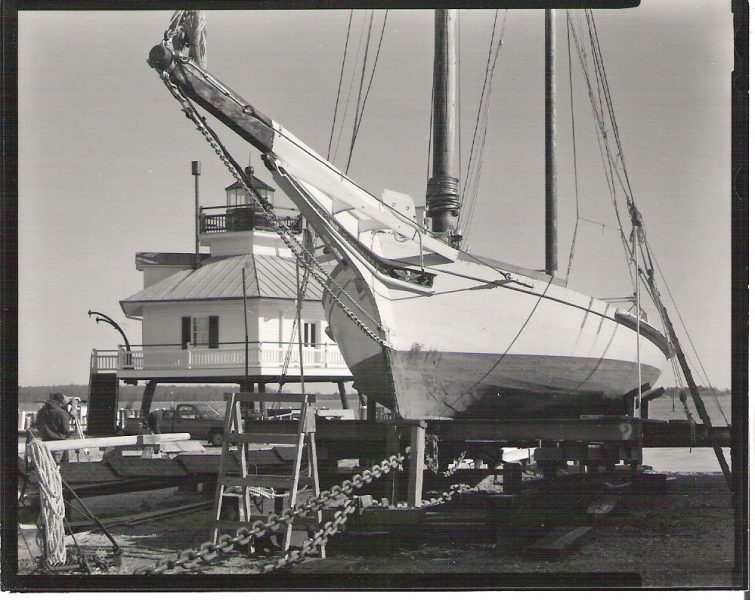Edna E. Lockwood, a National Historic Landmark, and the last of the historic sailing log-bottom bugeyes, was built in 1889 by John B. Harrison of Tilghman Island. Like Indigenous dugout canoes, which were formed by carving out a single log, a bugeye’s hull is constructed by pinning together nine yellow pine logs. Edna was designed at a time when sawn lumber was difficult to obtain, but since large trees were readily available, boatbuilders used log construction.
Built in when the oyster industry was booming, Edna E. Lockwood worked as an oyster dredge until 1967. Edna’s deck is low to the water, making it easier to pull the oyster-loaded dredges aboard. While the origin of the name “bugeye” is unknown, some say it may be derived from “buckie,” a Scottish word for oyster. Edna has docked at Chesapeake Bay Maritime Museum since 1967 and was donated to CBMM in 1973 by John R. Kimberly.
Built: 1889, Tilghman Island, Md., by John B. Harrison
Length: 54 ft., 8 in. (16.7 m)
Beam: 17 ft., 2 in. (5.24 m)
Edna E. Lockwood, nine-log bugeye, 1889. Collection of the Chesapeake Bay Maritime Museum, St. Michaels, Md. Gift of John R. Kimberly. Maintenance of vessel provided for in part by the Kimberly-Clark Foundation Endowment Fund in memory of John R. Kimberly. 1967.0155.0001.
